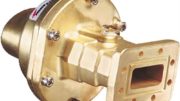Well, let me first answer your obvious question. Obviously you would not want one satellite system to work in multiple countries, unless you’re going to more than one country. While there’s a little bit of RV’ing that goes on across the borders into Canada and Mexico, for the most part we’re talking about yachts here.
And before most of you check out, thinking you’ll never have that kind of money, hang on… it’s still a good article. I’m in a mood as I’m writing it so it’s going to be a little prickly. Everyone likes it when I get a little prickly.
Here’s the scenario
So, let’s say you’re superwealthy and you have a big yacht. I mean, big. Like, big enough that you won’t even notice a two-and-a-half-foot wide white gumdrop somewhere up on your antenna stack. I think we would all like to be this wealthy. Some people are, and good for them.
Now, no matter if you’re wealthy or just average, no one wants to be away from their entertainment for too long. That’s why you want to have satellite TV while you’re on the water. Relying on your mobile device, even with a big, mast-mounted booster, is going to get you at most 10-20 mile coverage, often less. If you’re further away from that from the shore, you want satellite TV. Satellite TV doesn’t cover everywhere, but it will take you 50-100 miles from shore in most cases. This is enough to be in the middle of Lake Michigan, throughout much of the Caribbean or the Gulf of Mexico, and a decent distance away from the California coastline. So far that you’re not seeing land. That’s what I’m talking about.
When you’re out there you are going to want to watch a little TV at night, anf chances are the cell coverage is zero. Solid Signal has lots of options for marine satellite TV… but what if you want to go further?
It can be done
What if you want to get satellite TV, literally anywhere? Like, you’re sailing to South America, or to Europe? The larger marine craft can do this, you know. Intellian’s S100HD will let you get signals from pretty much any satellite provider in the world. Its WorldView LNB will receive Ku-band signals with either circular or linear polarization, and it can even receive DIRECTV’s Ka-band signals. However, the satellite antenna itself is just part of the overall package. You will still need different satellite TV receivers in the staterooms (of which, I’m assuming, there are several.) You’ll also need a wiring system that’s compatible with the service you’re using. DIRECTV and DISH use very different systems from the rest of the world, and that needs to be considered, but at least you’ll have one dome that gets all the signals.
Once you get to the middle of the ocean, satellite TV coverage starts to fade. You would need a really gigantic dish and you would have to make contracts with content providers directly. If you’re 500 miles from land, I hate to tell you but there’s not a lot of TV out there. No one is there to pay for it. Once you get to Europe, you’ll need completely different equipment in many cases, although some of the stuff designed for the US and Latin America will work depending on where you are going.
But let’s be honest, at that point you’re too busy controlling multinational corporations and planning to save the world, because you’re really rich. I’m pretty sure that’s what really rich people do… at some point I hope to have the chance to find out.
When you’re ready to dive into the world of marine satellite television, call the experts at Signal Connect! We’re here for you at 888-233-7563. If it’s after business hours, fill out the form below. We’ll get back to you, usually within one business day.





